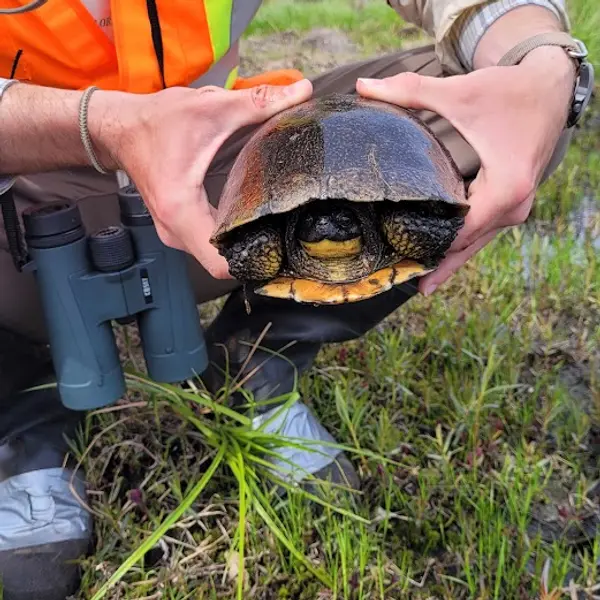Ecological Monitoring
Understand dynamic ecological systems before and after development.
We deliver cost-effective, easily interpretable wildlife and vegetation assessments to mitigate and assess the impacts of your projects, and fully realize the ecological potential of your places.

Multi-dimensional assessments made simple
Our ecological consultants use scientifically rigorous environmental monitoring and assessment systems to understand disturbances to pre-development ecosystems, or measure the progress of ecological restoration projects. We use field assessment data with ArcGIS and R software to efficiently conduct spatial and statistical analysis.
From riparian (riverbank) vegetation, to old growth forest, to wetland restoration, we bring the right tools and experience.
We take dozens of protocols into consideration including:
- Marsh Monitoring Program
- Acoustic bat surveys
- Breeding bird surveys
- Ecological Monitoring and Assessment Network
- Ecological Land Classification (ELC) certification
- Tree risk assessment standards
- Ontario Wetland Evaluation System (OWES)
- Butternut Health Assessment (BHA)
We work at all scales and timelines. Our satisfied customers include single assessments and decade-long monitoring commissions.
Dougan Ecology is here to support your ecological restoration or naturalization goals while ensuring policy compliance.

Our client-focused, mission-driven team is ready to move your project forward with the best quality information
Our experienced ecological consultants, passionate GIS experts, and experienced project managers offer integrated services for assessment, monitoring, and all your ecological consulting needs.

Frequently asked questions about ecological monitoring
Ecological monitoring involves systematically collecting data to assess the health and changes in ecosystems over time. It supports environmental planning by identifying impacts from development, land use changes, or restoration efforts. Dougan Ecology offers tailored, long-term monitoring programs to track site recovery, fulfill EIS or permit conditions, meet regulatory requirements, and guide adaptive management, helping ensure successful, science-based outcomes.
Dougan Ecology monitors a wide range of ecosystems, including wetlands, forests, riparian zones, and grasslands. Our team conducts assessments across various habitats—from urban ravines and woodlands to restored wetlands, using tailored, site-specific methodologies. This ensures that each ecosystem's unique biodiversity and natural heritage features are evaluated with precision and efficiency.
Ecological monitoring integrates diverse and recognized protocols to ensure accuracy and consistency. In Ontario, key protocols include the Marsh Monitoring Program, Breeding Bird Surveys, Acoustic Bat Surveys, Ecological Land Classification (ELC), Ontario Wetland Evaluation System (OWES), Ecological Monitoring and Assessment Network (EMAN), Floristic Quality Analysis (FQA), and more. These frameworks allow for efficient data collection, mapping, and long-term trend analysis essential to ecological reporting and EIS submissions.
Yes. As an ecological consulting firm, Dougan Ecology conducts assessments and ongoing monitoring for species at risk. This includes habitat suitability evaluations, population tracking, and mitigation planning. Our work supports compliance with the Endangered Species Act and contributes to long-term biodiversity protection.
Vegetation monitoring involves field surveys to assess species composition, cover, density, and regeneration. Dougan Ecology uses transects, quadrat sampling, and remote sensing technologies to collect data. These findings inform land management strategies and provide insight into ecosystem health, restoration progress, and climate adaptation outcomes.
Wetland health is evaluated using vegetation inventories, hydrological assessments, water quality testing, and habitat evaluation for indicator species. Dougan Ecology monitors wetlands near commercial, industrial, and residential developments to ensure that sedimentation, erosion, and other threats are effectively mitigated. Restoration projects are also monitored over time to confirm the success of nature-based solutions.
Yes. Dougan Ecology designs tailored long-term ecological monitoring programs to assess restoration effectiveness, track trends, and support adaptive management. These programs are often a requirement of EIS approvals or permit conditions and can range from three to ten years depending on project needs. Programs are efficient, cost-effective, and aligned with both ecological goals and regulatory frameworks.
